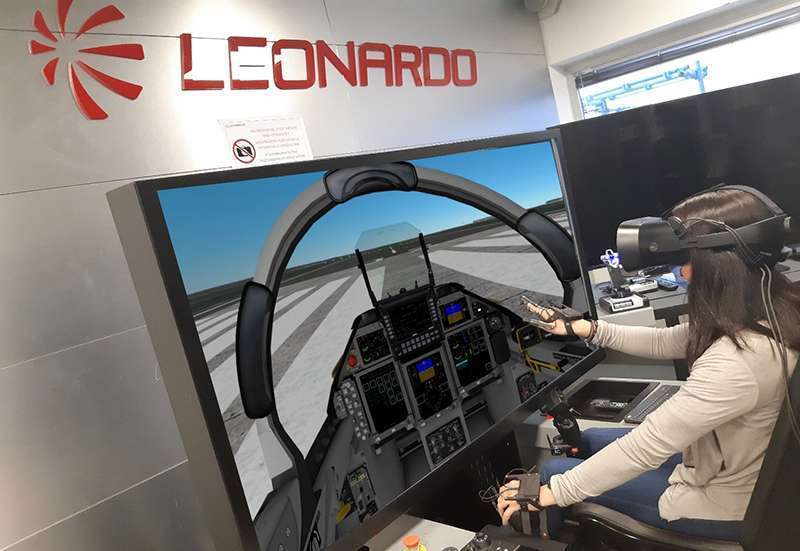
Basic training systems for military and civil pilots based on simple PCs are now widely used worldwide. This cost-competitive technology complements that of the most advanced full mission simulators (FMS) and aircraft, without offering any less training capacity or value. Leonardo has invested heavily in this equipment and has built some highly advanced versions that form part of the integrated training system for military pilot training.
The genesis of Leonardo’s current Simulation Based Trainer (SBT) product comes from an idea dating back to the conception of the Integrated Training System (ITS) for the M-346. Thanks to the growth of the company’s in-house technological capabilities and the fruitful and close relationship built up over the years with the Trainer’s customers, this product has evolved considerably over the last decade, making it a current market leader. Let’s take a closer look at its, although short, history.
Computer Based Training (CBT) is one of the first PC-based pilot training tools. It has now become an essential part of the training of all civil and military pilots. This starts from when they obtain their first level license, since CBT uses the multimedia features of PCs to make classroom lessons more interactive and engaging during the ground school phase.
Starting in 2005, with the development of the integrated M-346 ITS project, the former Alenia Aermacchi had the idea to build a bridge between CBT and the traditional flight simulator by adding a ‘new’ system called Simulation Based Trainer (SBT) to the ground training pipeline.
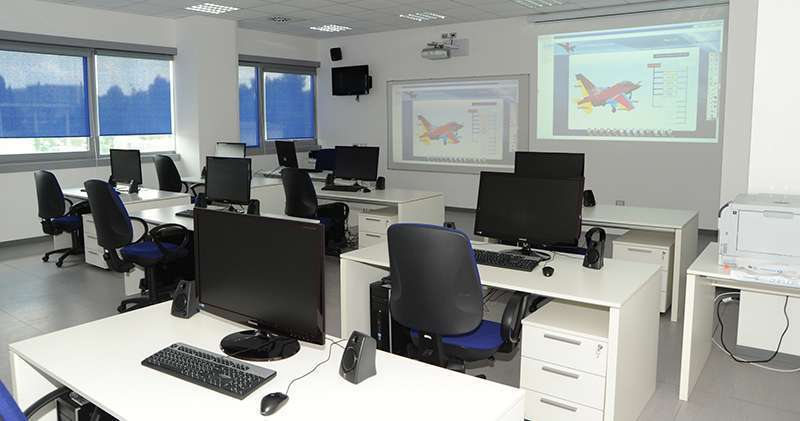
The goal was to enable innovative and cost-effective learning approaches by exploiting the potential of PC-based simulation, introducing the Virtual Instructor concept and the verification of the degree of learning achieved.
The SBT system began as a simple desktop PC, connected to throttle and stick, equipped with software representing the aircraft.
An initial version of the product, developed for the SF-260 and delivered to the Zambia Air Force, served as a testbed to verify its versatility and ease of use, and sanction its eventual introduction into the new M-346 ITS system under development.
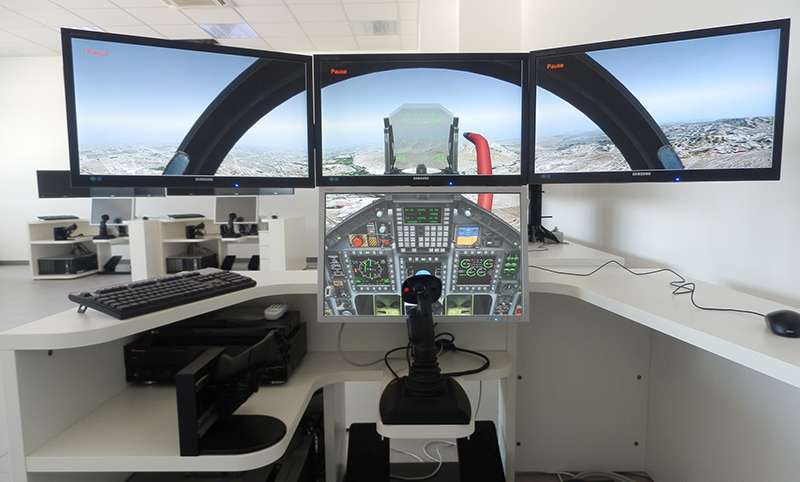
As often happens with successful ideas, the subsequent developments were driven by the customers themselves. Although each had its own distinctive training management features, the Air Forces that had acquired the M-346 with its integrated training system (ITS) began to increasingly appreciate the potential of the solution, directing and supporting further developments.
Over the years, the resulting ideas and concepts provided a significant stimulus to improving the system. This led to the expansion of the standard and emergency procedures handled, greater realism and representation of the aircraft system compared to traditional simulators, and, alongside the flight control commands, the addition of a ‘side panel’, with rapid view change buttons and a lever to move the landing gear and flaps.
At the same time, we increasingly integrated the product with other ITS systems, such as the CBT and TMIS (Training Management Information System), with which it shares the Learning Management System, thus creating a fully integrated Academic Training System. We also integrated it with the FMS and the aircraft itself, with which it shares the mission planner and onboard simulation. Thanks also to the introduction of the single high-definition touchscreen, replacing the previous six monitors, this latter capability turned it into an ‘additional simulator’, cooperating in a complex scenario consisting of networks of flight simulators representing different types of aircraft, able to act both as companion and aggressor in tactical scenarios.
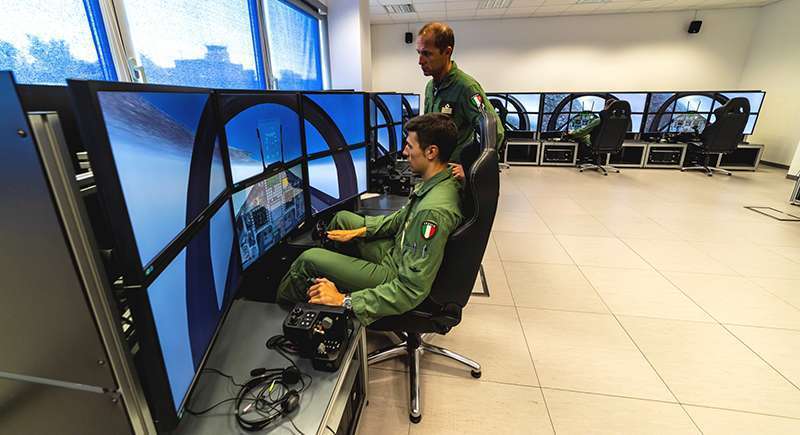
Recently, new steps were taken towards a further technological leap forward with the introduction into service of the new Aermacchi M-345 training aircraft for the Italian Air Force. This saw the introduction of eXtended Reality with visors for immersive and mixed virtual reality and tactile gloves. This increased the effectiveness of training while also opening the way to the development of new technologies that can lead to important engineering spin-offs and further technological developments. The ‘virtual instructor’ is integrated with equipment that accurately simulates the aircraft’s aeromechanical, performance and avionic characteristics. These are all set in an external virtual, meteorological and tactical environment which provides the pilot with all the stimuli (visual, audio) experienced during actual flight.
Leonardo developed a specific SBT as part of the Academic Training System of the Eurofighter aircraft, whose design and validation benefited from the involvement of authoritative Eurofighter training subject matter experts. Our SBT subsequently achieved its fullest application in the highly prestigious and complex European Typhoon fighter aircraft programme.
The system – which includes a Virtual Instructor who guides the trainee through the training tasks and, in test mode, assesses the degree of learning achieved, and is known as PTD (Procedural Training Device) – is currently in the final stages of acceptance by the first customer.
The product’s effectiveness can be seen not only in its applicability to trainer aircraft, but also to any military aircraft, paving the way for development on other programmes.
In just ten years, SBTs have significantly reduced the need for aviation and flight schools to spend hours on higher class simulators, which are more complex and costly to operate, but are essential for the later and more advanced stages of training.
It should be remembered, in fact, that digitally designed products such as simulators make it possible to cut personnel training costs, radically changing the relationship with partners and customers, with considerable advantages in terms of sustainability. In the three-year period 2018-2020, as far as Leonardo alone is concerned, the use of virtual simulators for training pilot has, in fact, avoided the production of about 116,000 tonnes of CO2.
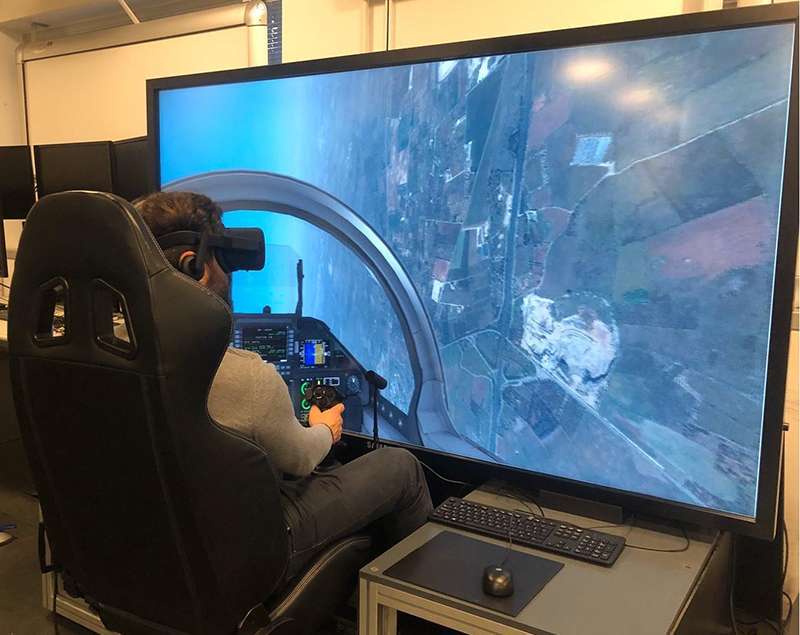
The SBT’s main advantage for the customer is the availability of an easy-to-use system, which the trainee pilot can access directly, without the support of dedicated technicians or instructors, while still offering high-level training effectiveness at a reduced cost. These factors make it possible for pilots to devote more hours to training. They can repeat exercises and procedures as often as they like, even adjusting them to their own needs, with significant overall advantages, using technologies and methods that feel ‘natural’ and in line with all current digital devices, particularly to the new generations.
Students’ familiarity with standard and emergency procedures led to instructors noting that training missions in full-mission simulators and onboard the real aircraft were more successful than previously for pilots who used the SBTs.
Thanks to their extreme versatility, SBTs are now also used by Leonardo to develop ‘concepts’ for future platforms and as a testbed for technologies that could be installed onboard new concept aircraft, leading to shorter development and qualification times.








Be the first to comment